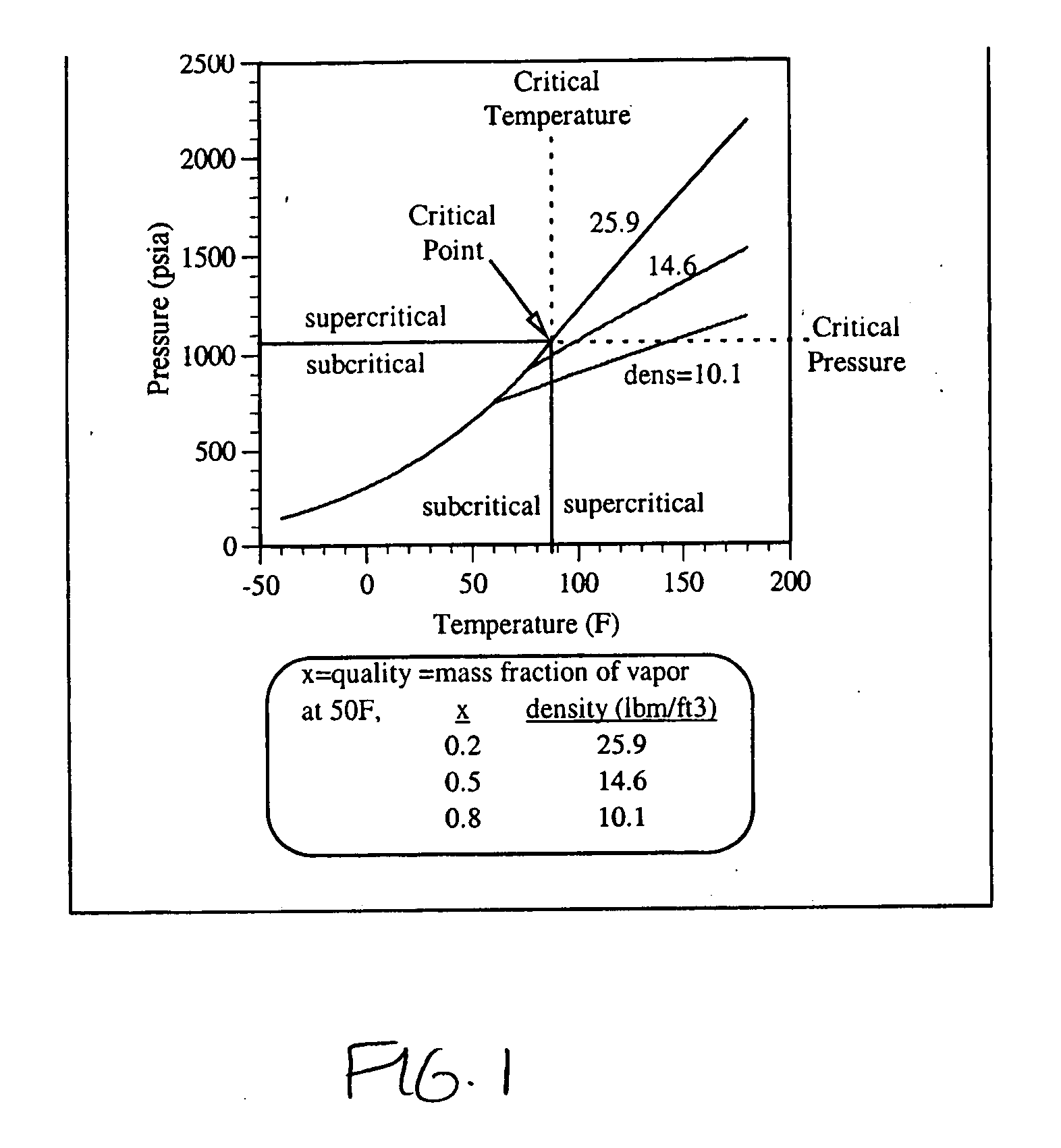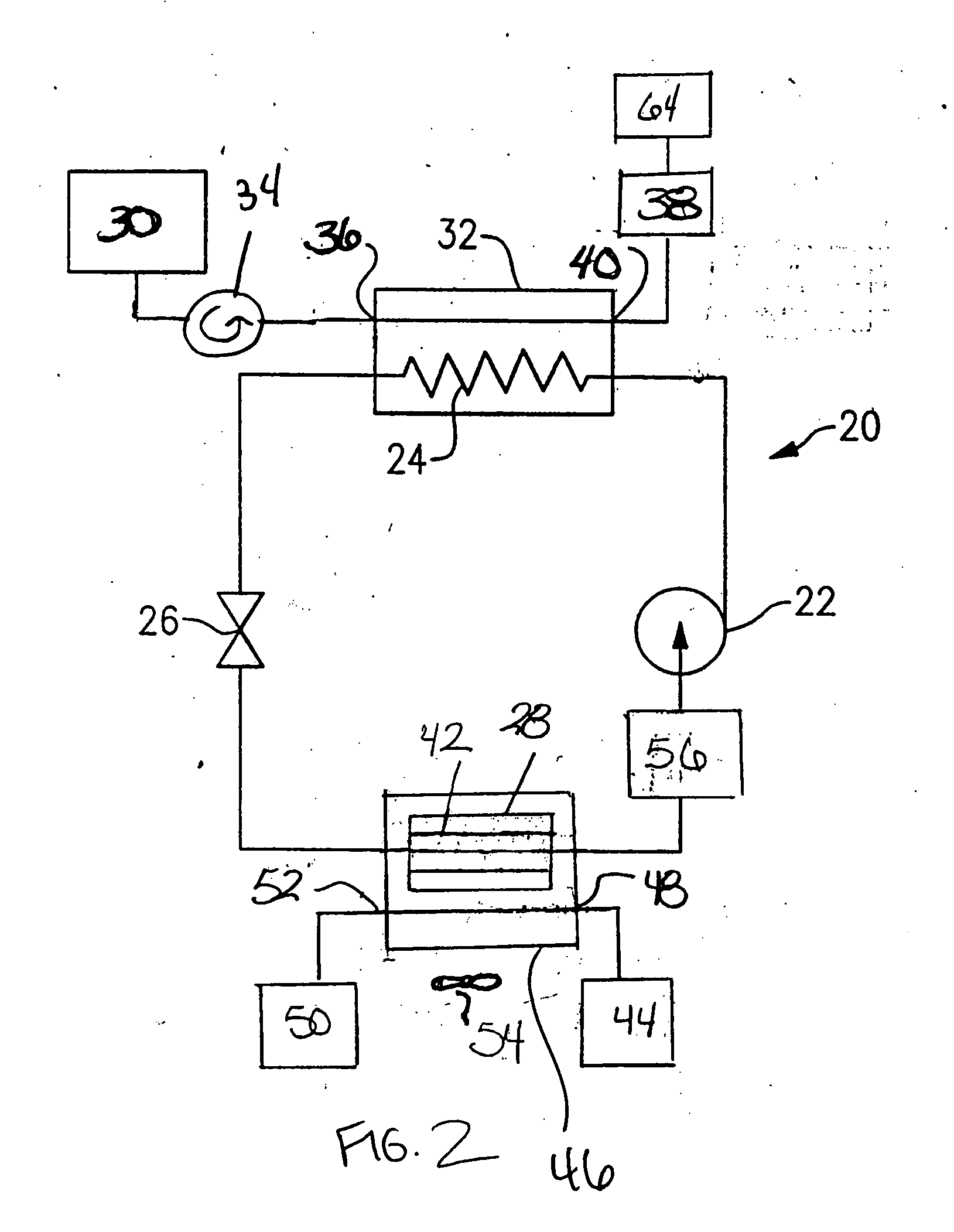Vapor compression systems using an accumulator to prevent over-pressurization
- Summary
- Abstract
- Description
- Claims
- Application Information
AI Technical Summary
Benefits of technology
Problems solved by technology
Method used
Image
Examples
Embodiment Construction
[0015]FIG. 2 illustrates an example vapor compression system 20 including a compressor 22, a heat rejecting heat exchanger (a gas cooler in transcritical cycles) 24, an expansion device 26, and a heat accepting heat exchanger (an evaporator) 28. Refrigerant circulates through the closed circuit system 20 through refrigerant lines.
[0016] In one example, carbon dioxide is used as the refrigerant. Because carbon dioxide has a low critical point, systems utilizing carbon dioxide as a refrigerant usually run transcritically. Although carbon dioxide is described, other refrigerants may be used.
[0017] The refrigerant exits the compressor 22 at a high pressure and a high enthalpy. The refrigerant then flows through the heat rejecting heat exchanger 24 at a high pressure. A fluid medium 30, such as water or air, flows through a heat sink 32 of the heat rejecting heat exchanger 24 and exchanges heat with the refrigerant flowing through the heat rejecting heat exchanger 24. In the gas cooler...
PUM
| Property | Measurement | Unit |
|---|---|---|
| Fraction | aaaaa | aaaaa |
| Pressure | aaaaa | aaaaa |
| Pressure | aaaaa | aaaaa |
Abstract
Description
Claims
Application Information
 Login to View More
Login to View More - R&D
- Intellectual Property
- Life Sciences
- Materials
- Tech Scout
- Unparalleled Data Quality
- Higher Quality Content
- 60% Fewer Hallucinations
Browse by: Latest US Patents, China's latest patents, Technical Efficacy Thesaurus, Application Domain, Technology Topic, Popular Technical Reports.
© 2025 PatSnap. All rights reserved.Legal|Privacy policy|Modern Slavery Act Transparency Statement|Sitemap|About US| Contact US: help@patsnap.com



